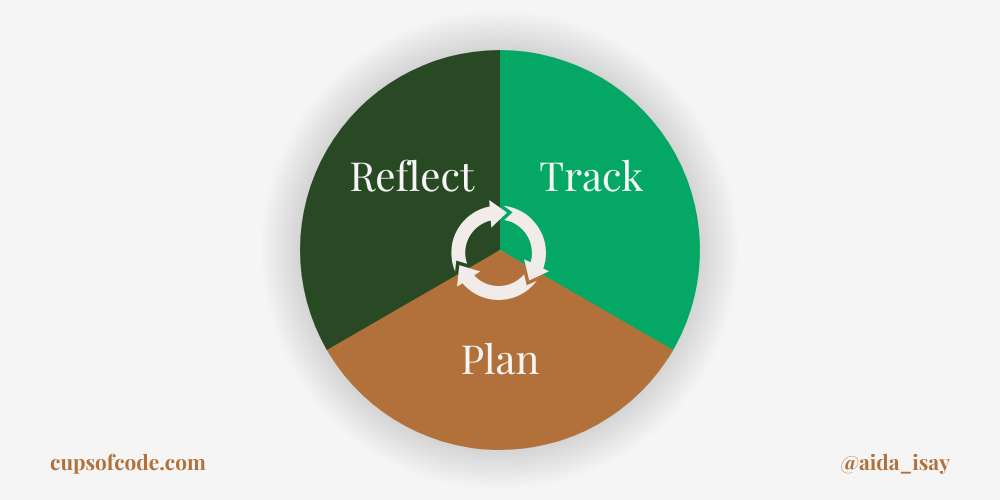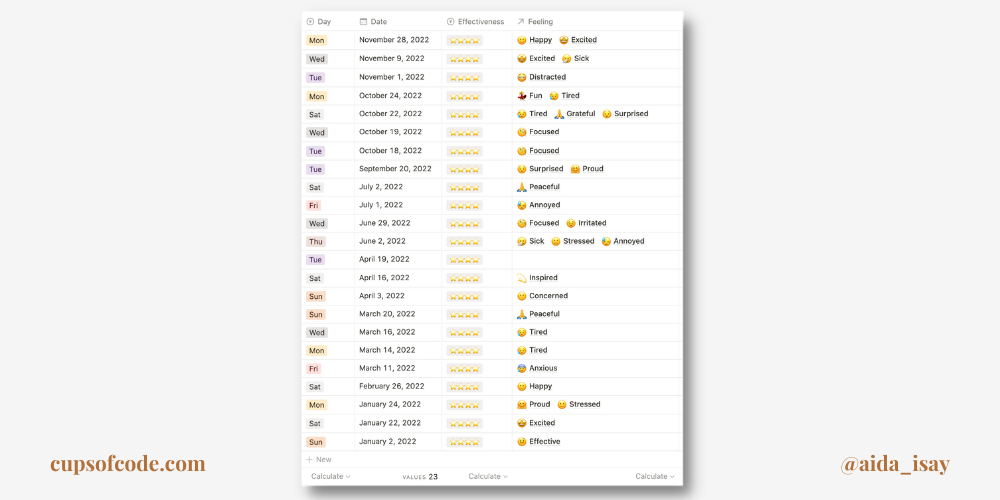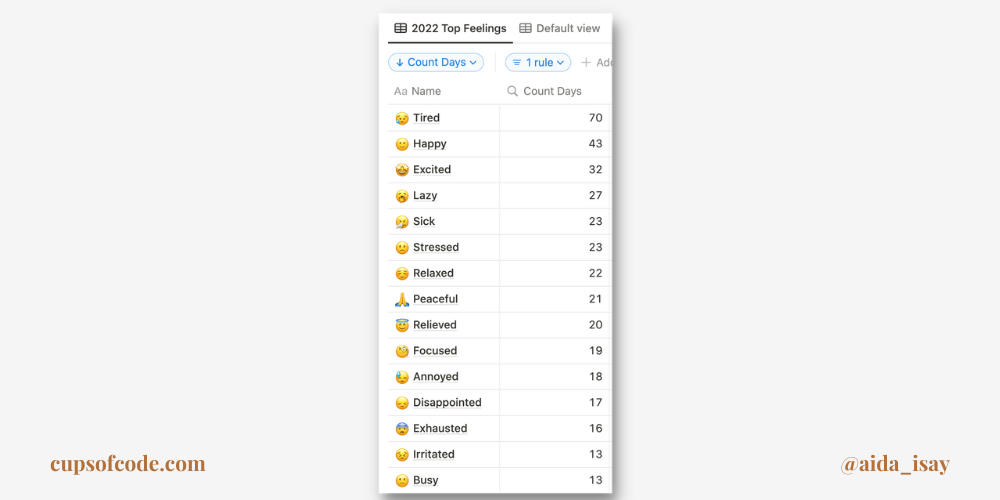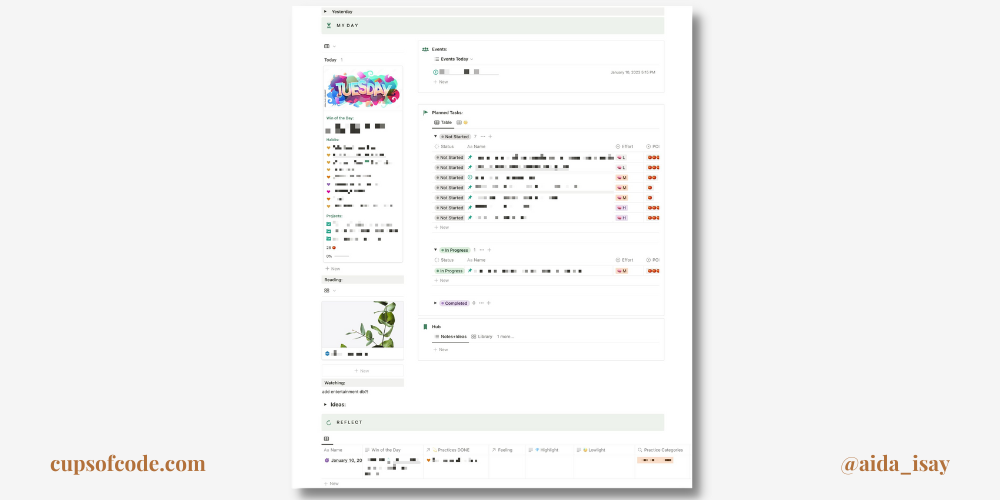Table Of Contents:
Prerequisites
A year into COVID lockdown I started noticing how my attention span has gone down dramatically. Often I’d forget why I even stepped into a room or simply what was the next thing I wanted to do. Having these symptoms with a full-time job, side-projects I wanted some traction on, home needs, and rental property requests was not easy. I’d frequently get overwhelmed and anxious which would lead to a trickle down effect on all areas of my life.
First, I decided to tackle down the main issue - being overwhelmed. To be honest, this is the natural side effect for people who pile everything up until the last minute. My whole life as I remember myself I’d always do and finish everything on the last day of the deadline. This process (or lack of thereof) is what worked well and got me straight A’s all throughout my school life, so why stop?
Welp - as it turns out (not surprisingly), waiting till the last minute to clear out all your to-do’s doesn’t scale well once more areas of your life start appearing that require attention.
A bad habit of putting things off til the last minute had a waterfall effect on all other habits in my life. In Q4 of 2021, I finished reading a book called Atomic Habits which suggested doing an inventory of my habits, and so I did. Main common theme among all of my habits was not being consistent. To give an example: there will be weeks where I didn’t workout - followed by an entire month where I religiously did hardcore workouts everyday, so at the end it all squares out.
And because time is a fixed variable, a little bit of more proper planning and coordination was required from me. So I asked Twitter in 2021:
Hey, #AndroidDev 👋
— Aida Issayeva 🌻 (@Aida_Isay) November 11, 2021
📌 Can you please recommend me a good productivity tool, where one can create and manage personal, professional, side-project tasks toward goals all in one, see them in calendar view/have the widget for it, track goal progress, and retrospect?
Subsequently I started googling and researching the various approaches people take to combat this very common issue most adults face. I learned about different methodologies when it came to task management: from time blocking, to task batching, to energy management.
There were so many different ways I wanted to try, but was there a tool that could handle all the competing priorities in one’s life while being able to store and display historic data of all completed/not completed tasks? Google Search recommended Notion .
For the second issue - anxiety - a lot of people suggested daily journaling, where you pour everything you have on your mind onto a notepad. I’ve always been an adamant nay-sayer of it since my early ages. But decided to give it a quick run and see how it goes.
New Formula
Every year, I tend to assign an overarching theme to be sort of a North Star for all goals of that year. For 2022, I refined my approach and decided not just set a theme or word, but dig deeper into my identity and choose a theme from there.
However, ’my Identity’ was such a vague word that it didn’t ring any bells. I tried searching hard for it, but it led me nowhere. So instead of trying to find ‘who I was’, I decided to shift my focus onto ‘who I wanted to become’ [If I remember correctly, this is one of the exercises from Atomic Habits book]. This is what finally helped me identify some of the habits I wanted to elevate on my daily routine.
My ‘who I wanted to become’ identity is all around wellbeing: physical, emotional, financial, spiritual. At the core of it all, emotional wellbeing is paramount, and with my constant state of overwhelmed and anxious, it was what I struggled with the most. Thankfully, after some serious internal debugging, I came up with a formula to achieve that identity:
1Proper task management + consistent habits = emotional wellbeing
With this in mind, I dove into 2022.
Setup
When it came to setup, my cycle was Track → Plan → Reflect:

By tracking your progress you can understand where you currently stand, how far you’ve come, and how much you’ve accomplished. Planning out how you’re going to reach the goals helps you to keep focused and on track. Reflecting on your progress allows you to see what’s working and what isn’t, and make adjustments as needed. This cycle can help you stay motivated and on track toward achieving goals.
1. Track
a) There is a famous phrase by Peter Drucker “You can’t improve what you don’t measure”. I’m a firm believer of the phrase.
But how do you measure being overwhelmed and anxious? Often times when we think of measures - we get stuck on well-known measuring units, and easily dismiss other ways of measure. Granted, it’s near impossible to find uniformed ways to measure emotions and decision-making skills across a population, because there are too many variables in play.
However, when we take into account only YOU and YOUR emotions and feelings, measuring them becomes a matter of personal choice and later a habit. For example, I chose to track emotions every day to see a historic overview of how I felt throughout the week, month and year.

b) For proper task management, I chose to track the amount of time allocated to finish it. I used the famous Pomodoro technique , where each task is defined by size of tomatoes(🍅).
1 tomato is 30mins (25mins deep work + 5 mins break), 2 tomatoes is 1 hour of work, and so on. Maximum number of tomatoes for each task is 4 tomatoes = 2 hours of work. This restriction helped me to break down tasks.
2. Plan
After identifying tracking units, the next step step is planning. It all starts with taking the time to think ahead and set clear goals, identify steps needed to reach those goals, and finally, make sure you have resources and support to make them happen.
When it comes to planning, there are different levels you can do it on:
- On a weekly basis, you can plan out your to-do list and schedule for the coming week.
- Monthly planning can involve setting goals for the month, and reviewing progress on yearly goals.
- Quarterly planning is all about checking in on the bigger picture and making sure you are on track for the year.
- And annual planning is where you set big picture goals for the next 12 months.
3. Reflect
But before planning, one should retrospect first on the previous cycle.
My preferred level of planning & reflecting is a weekly level. It gives me the ability to frequently check-in on habits & progress, go into a greater details about what worked & didn’t work, and enough flexibility to adjust goals & priorities.
Reflecting on a weekly basis involves taking some time to review what you have accomplished during the week, what went well, and what didn’t go as planned. This reflection can help you gain a better understanding of your productivity, your habits, and your progress towards your goals.
By taking the time to reflect on your week, you can identify patterns and trends in your behavior that may be hindering your productivity or progress. You can also identify areas where you may need to adjust your goals or your approach to tasks.
Reflection can also help you celebrate your successes and acknowledge your accomplishments. This can help boost your motivation and confidence as you move forward.
When it comes to future planning, reflection is essential. By reviewing what worked and what didn’t in the previous week, you can make more informed decisions about how to allocate your time and resources in the upcoming week. You can also adjust your goals and priorities based on your reflections to ensure that you are focusing on what matters most to you.
Overall, reflecting on a weekly basis can help you stay on track, improve your productivity, and make more intentional decisions about how you spend your time. It can also help you develop a growth mindset, where you view challenges and setbacks as opportunities for learning and improvement.
Results
Proper task managementis still a work in progress for me.
In order to effectively manage tasks, it’s important to both plan and execute properly. However, I’ve struggled with both aspects of task management, and this has taught me a lot about myself in Q1 of 2022. Here are some of the key things I’ve learned:
a) I have a tendency to underestimate the amount of time required to complete tasks, which often leads me to stack my days with too many tasks during my weekly planning.
b) Due to this, some tasks end up rolling over to the next day, which can make me feel overwhelmed and stressed, especially if that day is already full of tasks.
c) When I see too many tasks on my to-do list, it can cause me to procrastinate and do nothing. Essentially, procrastination has become my coping mechanism for when I feel like I have too much on my plate.
Since the main issue was overestimating how much I can realistically complete in a day, I started tracking my planned vs completed tasks on a weekly basis. This allowed me to identify where I needed to adjust my planning and be more realistic about what I could accomplish.
The results of my tracking have shown that my average completion rate for 2022 was only 54.5%, meaning I completed only half of what I had planned. The top 10 feelings I experienced in 2022 (as shown in the chart) speak for themselves:

Moving forward into 2023, I’m being more intentional about what I plan and how I fill up my week. I hope this will help me to better plan and execute my tasks.
Daily Journalingwas a pleasant surprise for me!
I noticed that simply writing out my emotions made me feel lighter and more at ease. After two months of consistent journaling, I also noticed a positive shift in my mood and perspective towards my daily challenges.
I was able to reduce my tendency to overreact and overthink, and most importantly, it helped me manage my anxiety. This was a significant accomplishment for me last year! As I look to the future and the kind of person I want to become, daily journaling is the one habit that I know I want to continue doing every day.
Consistent Habitsbecame possible because of visual reminders.
I am grateful that I chose Notion to organize my digital workspace, which gave me the flexibility to prioritize what’s important to me, including my habits. Initially, I trained myself to open Notion first thing in the morning instead of opening social media, so I could see how busy my day was and what was in store for me.
It took several iterations to find a good setup that helped me feel productive and avoid procrastination or feeling overwhelmed. But by mid-year, after many adjustments, I found a setup that worked for me:

As you can see, the left side of the setup has a list of habits for each specific day, making them hard to miss or skip.
Final Thoughts
In conclusion, the COVID lockdown had a negative impact on my attention span and emotional wellbeing, leading to feelings of overwhelmedness and anxiety. To address these issues, I turned to task management tools and daily journaling, and focused on forming consistent habits based on the desired identity of prioritizing emotional wellbeing.
Despite struggling with task management in 2022, I found that daily journaling had a positive impact on my mood and reduced anxiety.
In 2023, I am being more intentional about task planning and continue to prioritize daily journaling and consistent habits to support emotional wellbeing.